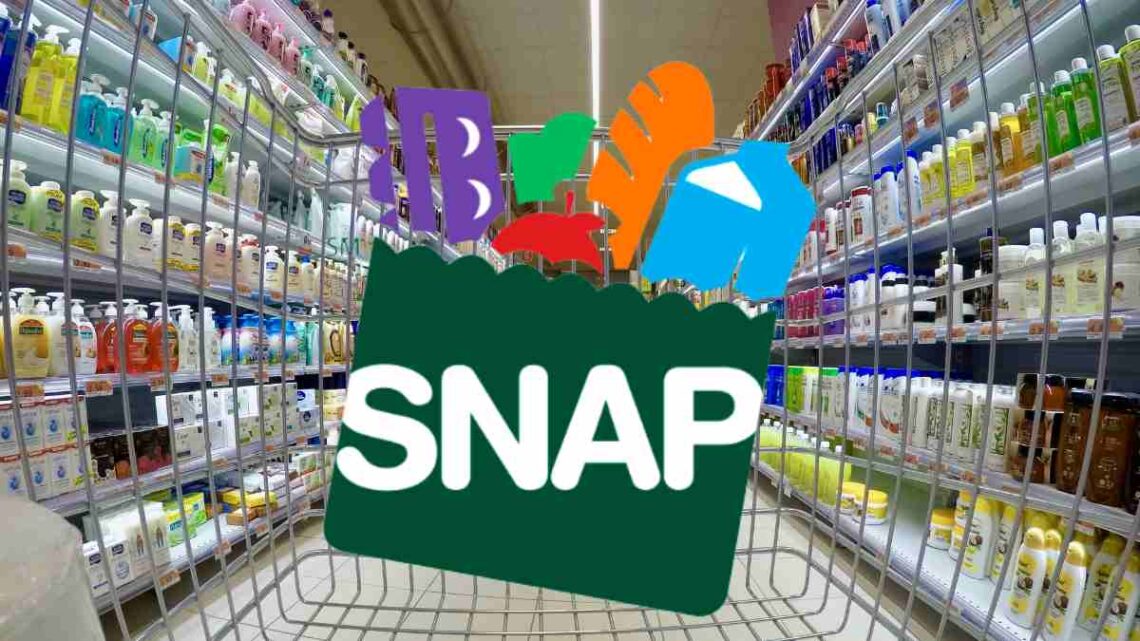According to Vibes.okdiario, In the United States, many retirees receiving Social Security benefits are now considering applying for the Supplemental Nutrition Assistance Program (SNAP), commonly known as “food stamps,” to help supplement their income and cover essential food needs. SNAP is a critical resource for low-income individuals and families, providing financial assistance to purchase groceries. This support becomes particularly important for those whose Social Security checks do not fully cover their basic living expenses.
How Age Affects SNAP Benefits
There is a growing interest in combining both Social Security and SNAP benefits. However, many people wonder if age could be a limiting factor when applying for SNAP. While there is no specific age requirement for applying, individuals over 60 often find that they have access to additional benefits or greater flexibility in meeting program requirements. Here are some specific advantages for seniors:
Higher Income Thresholds
One significant benefit for seniors is the possibility of qualifying for SNAP even with a higher income level than younger applicants. For those aged 60 and over, the income limits can be more generous. This means that even if they are receiving Social Security payments, they may still be eligible for SNAP assistance.
Deduction of Medical Expenses
Another important benefit for seniors is the ability to deduct certain medical expenses when calculating their income for SNAP eligibility. This can be a crucial advantage, as it lowers their net income in the program’s eyes, increasing their chances of qualifying for food assistance. Medical costs such as prescriptions, doctor visits, and other health-related expenses can significantly impact the outcome of an application.
Simplified Application Process
In some states, seniors may benefit from a more streamlined application process. This effort aims to remove bureaucratic barriers, allowing older adults to access the assistance they need with fewer complications. This simplified process can make a significant difference for seniors who may struggle with the paperwork and administrative hurdles that often accompany government programs.
Combining SNAP with Social Security Benefits
For seniors already receiving Social Security payments, applying for SNAP can be especially beneficial. While Social Security income is considered when determining SNAP eligibility, it does not automatically disqualify applicants. In fact, being able to combine both Social Security and SNAP can be vital for ensuring retirees have access to sufficient and nutritious food, especially when their monthly Social Security checks fall short of covering all living expenses.
Many seniors find that their Social Security payments simply do not stretch far enough to cover the rising costs of essentials such as housing, utilities, and healthcare. In such cases, the added assistance of SNAP can be life-changing, helping them buy nutritious food that supports better health outcomes—crucial for older adults.
Also read: LOTTO LOSS: I won the $2 million Powerball jackpot after I ‘doubled’ my luck – but my choice forced me to give away over $775,000
Other Factors Affecting SNAP Eligibility
While age is an important consideration, several other factors also determine whether someone qualifies for SNAP. Key aspects include:
Household Income
Household income is a primary determinant of SNAP eligibility, encompassing all forms of income, including wages, pensions, and Social Security benefits. The SNAP program sets income limits that vary based on household size and federal poverty levels. For seniors, these limits tend to be more flexible, but exceeding certain thresholds could lead to a denial of benefits.
Financial Resources and Assets
Alongside income, SNAP eligibility also considers the financial resources and assets that an applicant possesses. This includes savings and property, though a primary residence is usually excluded from these calculations. For those receiving Supplemental Security Income (SSI), certain resource tests may be waived, making it easier for them to qualify for SNAP.
Disability Status
Individuals receiving disability benefits from Social Security (SSDI) may encounter additional eligibility considerations. Like seniors over 60, those with disabilities can deduct medical expenses, increasing their chances of qualifying for SNAP. Medical costs are a significant burden for many people with disabilities, and the ability to deduct these expenses can facilitate access to necessary food assistance.
Navigating the Balance Between Social Security and SNAP
Balancing Social Security and SNAP benefits is not always straightforward, as both programs have different eligibility requirements. It is essential for applicants to be aware of the criteria and documentation needed for each. Social Security checks are considered income but may not count against SNAP eligibility in the same way other forms of income do.
For example, while wages from employment might affect an applicant’s standing more significantly, Social Security payments may have a limited impact on qualifying for SNAP.
State-Level Variations in SNAP Benefits for Seniors
While there are no specific SNAP eligibility rules or benefit calculations tailored to seniors, the main factor is income relative to the poverty level. However, households with an elderly member may have more lenient asset limits.
SNAP eligibility rules and benefit amounts can vary by state, despite being a federal program. States have some flexibility to modify certain eligibility criteria. For instance, in fiscal year 2023, Hawaii had the highest average monthly SNAP benefit per household member at $385, while Minnesota had the lowest at $157—Hawaii’s benefit was double that of many other states.
In 2022, the states with the highest percentages of their populations receiving SNAP were New Mexico (25%), D.C. (22%), Louisiana (18%), and West Virginia (18%), all of which align with states experiencing high poverty rates.
Additionally, Florida recently expanded SNAP work requirements to include adults up to age 59, beyond federal rules. Critics argue this change may cause hardship for older residents who could lose benefits. A new Florida law aims to address the “benefits cliff,” which can occur when recipients earn too much to qualify but not enough to be self-sufficient, by providing case management to assist with the transition but no additional financial relief.




![Tyson Foods Plant [Photo: Food Manufacturing]](https://southarkansassun.com/wp-content/uploads/2023/08/iStock_1185520857__1_.5e441daa51cca-600x337.jpg)








![Silverado Senior Living Management Inc. [Photo: Los Angeles Times]](https://southarkansassun.com/wp-content/uploads/2023/10/download-6-4-600x337.jpg)

![China's Wuhan Institute of Virology [Photo: Nature]](https://southarkansassun.com/wp-content/uploads/2023/09/d41586-021-01529-3_19239608-600x337.jpg)















